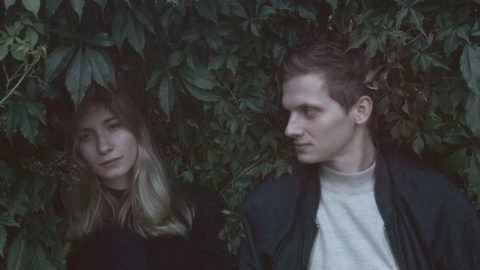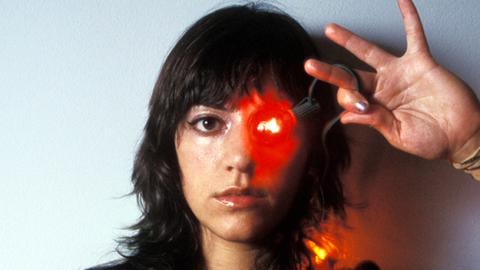Sundance Interview: Dustin Guy Defa
In an independent film scene overrun with canny careerists, Dustin Guy Defa is someone who has genuinely made his way in from the fringe. After first cracking the festival circuit nearly a decade ago, he emerged in 2011 with the one-two of feature Bad Fever, a shaggy-dog story about a social isolate (Kentucker Audley) who seems to imagine himself a household-name standup comic, and Family Nightmare, a 10-minute distillation of 40 hours of cruddy consumer-grade home videos from the director’s upbringing in Salt Lake City, with the audio grotesquely modified. Today, Defa has drawn much nearer to the heart of things, occasionally appearing as a performer for contemporary independent filmmakers—he can be seen in Matías Piñeiro’s Hermia & Helena (2016) and on Caveh Zahedi’s The Show About the Show (2015-)—and presenting his first (relatively) big-budget, A-lister ensemble piece, Person to Person.
Person to Person takes place over the course of a single weekday in New York City and is made up of five identifiable narrative threads. Record collector Bene (Bene Coopersmith) sets out to buy a rare edition of Charlie Parker’s Bird Blows the Blues from a dealer who turns out to be a hustler. Bene’s depressive roommate, Ray (George Sample III), has problems of his own, with his ex-girlfriend’s brother threatening to break his legs as revenge for Ray posting nudes of his ex online. Meanwhile, across town, a cub reporter at a tabloid paper (Abbi Jacobson) and her mentor (Michael Cera) investigate a possible crime of passion, hanging around a clock-repair shop belonging to Jimmy (Philip Baker Hall) looking for possible case-breaking clues. Finally, we see Wendy (Tavi Gevinson), a stiflingly smart teenager playing hooky and trying to get out of her head long enough to make a connection with a boy her own age—a stand-alone segment that in no way intersects with the others.
It’s a lot to unpack. So, amid the social whirl of Sundance, Film Comment sat down with the film’s writer, director, and editor to get a sense of his master plan. Person to Person is the closing night film of this year’s New Directors / New Films at the Film Society of Lincoln Center and Museum of Modern Art, and it screens on March 25 and 26.
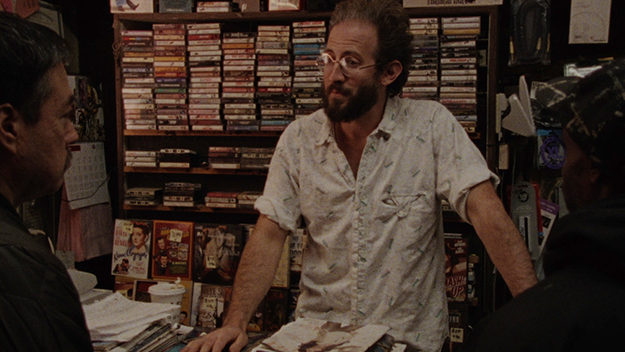
About three years ago I saw your short Person to Person at the Maryland Film Festival and liked it very much. What are the relationships between the short and the feature, beyond the title?
The truth is that in a perfect world, the new movie wouldn’t be called Person to Person. It wasn’t its original title.
It was Human People, right?
Yes, but I grew tired of that. I don’t know, I didn’t like it anymore. And then a lot of other “People” movies started coming out, with similar titles, like People Places Things, Difficult People, and Other People. So I tried to think of something else, but Person to Person just kept being the best title for the movie. I knew that everybody would think I made an extension of the short, which does make sense. You can read it that way because of Bene [Coopersmith] and because of some of the film’s tone, the record-collecting material, the 16mm, my writing, my vibe, and all that stuff. Because I knew that it was gonna be the considered an extension, so I already did a handshake on that. I’m happy for it to be read that way, it’s fine. I don’t know if it goes further than that.
My impression of the short was that it was really built around Bene’s character and persona. What’s your relationship with Bene?
Bene and I are old friends; we used to live together in Red Hook. He still lives there, it’s where his record shop is. I spent a long time trying to figure out how to write something with Bene, and then finally the short clicked. I had the scenario that I really knew would work with him and that I could get what I wanted out of him, which was him being frustrated with somebody, after somebody steps on his toes and takes advantage of his generosity. The character in the feature is much closer to the whole person of Bene. The short is obviously reflective of Bene, but there he is a little more closed off and more protective of himself than Bene is, whereas the character in the feature is more open and has a lot of love in his life. I mean the other guy does too, but the record shop is the most important thing for him in the short. In the feature, music and love and friends are equally important, so his values are closer to the real Bene here.
I want to ask you about the structure of the movie, which is very singular. I guess it would be categorized as a “network narrative”—and if I’ve got my math right, there are five individual story strands. Two sets of those overlap while one stands alone. I wondered how you struck on this?
That’s what started getting very exciting. I worked on the outline for a long time, probably for a month and a half. And it was only on day one or two of writing when I thought, “I’m going to make these things connect. How are these things going to connect?” And then on day three I was done with that and started wondering, “What’s possible here? Can I pull off a movie like this with all these different tones and characters, and not have them connect?” I mean Altman has done stuff like that, and even in Magnolia nothing connective happens until that last scene, like the frog rain, or the earthquake in Short Cuts. I imagine there are other movies that do that, too.
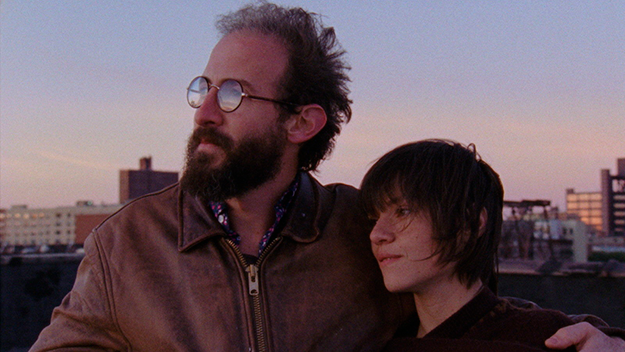
I participated in a podcast here a couple days ago where I compared the film to D.W. Griffith’s Intolerance.
I’ve never seen Intolerance, which is crazy. There are a couple of movies that I just feel like a total idiot for not having seen. And the truth of the matter is I’ve watched [Peter Bogdanovich’s 1981] They All Laughed just once, and it’s the only movie that I can think of that I would call close to mine—I can’t believe I never thought about it when I was writing it. It’s very, very different but there’s a certain New York–specific comedy going on, and it has lots of characters.
When you have any kind of parallel narratives it just creates an anticipation that the intersection is going to come at some point. Actually, Agnès Varda’s first movie, La Pointe Courte, undermines that. I know her stated inspiration was Faulkner’s The Wild Palms.
I was thinking about that—I saw the film while writing Person to Person, after I’d finished the first draft, somebody showed it to me when I was in Berlin. But, yeah, I wanted to get the audience to somehow watch an ensemble movie without thinking that it was going to end up coming together. The Q&As here have been so good, and I thought for sure by now someone would have asked, “Why didn’t the stories connect?” Maybe it’ll happen tonight, I’ll be in Salt Lake City, maybe the crowd will be a bit different.
That they haven’t asked probably speaks to the balanced strength of the individual sections. So often with these kind of network narratives there’s a disparity between the parts, where there’s some strand you’re irritated with, or another you want to get back to.
There was definitely a temptation to have two characters, like Bene’s or Tavi’s, walk by each other, to put them the same corner. But that would be avoiding the challenge that I was trying to pull off. I could go from Bene to Tavi, but everything about their tone and characters was so different that I decided not to even have them pass by each other.
At the same time, the individual sections do speak to each other.
I certainly wrote it to have everything speak to everything else.
I found the film to have a through-line that has something to do with personal ethics, especially as related to small businesses—the record-store clerk at what I believe is The Thing in Greenpoint, or the Philip Baker Hall character and his personal code regarding releasing client information.
That’s interesting because it’s something I never thought of.
Really? Something that comes across in the short as well in the feature is the sort of tenderness you have for offices, and for businesses that seem like they’re about to go out of business in another two weeks.
I am definitely attracted to that kind of thing, to analog things. I knew I was never going to have digital clocks in the clock shop, even though I never think of wristwatches as being analog. Are they analog? It’s a little dispiriting, though, when your attraction to the analog thing comes across as being so directly related to the ’70s or ’80s. That also becomes the problem with shooting in 16mm. In something like Jackie it’s meant to put you in a certain time, but with the stuff we’re doing… Maybe because my film is set in New York and is shot on 16mm, and you have Bene and the musical cues and all these analog objects around and you start thinking about the ’70s. I mean, I don’t know how you can be an American filmmaker and not be influenced by American films of the ’70s—but I never deliberately think about aping them. I think there’s something about 16mm and New York together that automatically feels vintage.
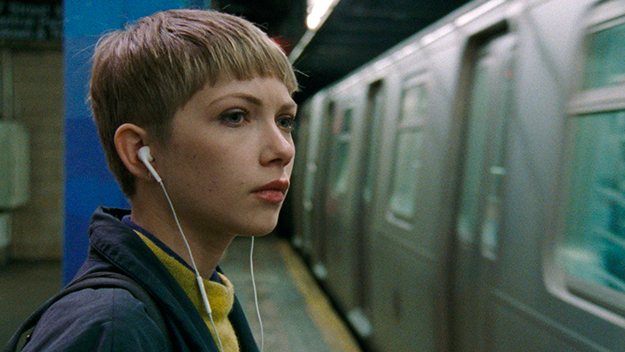
But the movie doesn’t feel like a nostalgia kick.
I hope not.
I wondered how or if you even thought about circumnavigating that—not trying to make the New York of 2016 the New York of 1976.
It’s interesting how new everything still is, like the Internet and our phones. I’m always tempted to write things that make fun of that stuff, of technology, and I’m often thinking about how it’s changing the way we communicate. That’s something about modern life that I want to explore. But I didn’t do that in this move in any kind of way.
Well, that’s not entirely true. The Internet does appear in the movie, and in a kind of villainous way.
Ray has no idea what it is and how to operate with it. I didn’t try to avoid nostalgia, I just knew I didn’t feel like I was doing anything touched with nostalgia, because I don’t like nostalgia. In fact, I think it’s poison in many ways.
James Gray—whose films have featured some great New York production design—once made the point that just because it’s 2000 doesn’t mean that the 1980s aren’t there anymore, that the ’70s aren’t there. All of these accreted layers are still there. I was born in 1980, but I can remember hippie wall coverings and stuff when I was a kid because all that effluvia of the late ’60s and ’70s was still around. You can make a movie in 2017 and there’s nothing deceitful in including these little pockets that belong not necessarily to Bloomberg’s New York, the New York of technocrats.
My taste certainly doesn’t run 100 percent modern, because I find a lot modern stuff to be pretty ugly. It also came down to the production limitations. My number-one choice for where Michael Cera would work was an extremely modern place. But we didn’t get it, so we ended up at Amsterdam News in Harlem, and it looks very old-school. I mean, the walls are yellowing and there’s stuff everywhere, and it ended up being perfect. It almost seems purposeful. The modern place could’ve been nicer in contrast, but the one in the film ends up falling into place with everything else.
Where was the watch shop?
That was built. It was an optometrist shop in Chinatown that had just gone out of business a month before.
It really has that feeling where… You know how people of a certain age just stop buying stuff? You get a sense that the last time this guy, the Philip Baker Hall character, purchased something for himself was in 1986.
There are no clock shops in New York—at least none that were big enough to shoot in. We found this man who’s like 90 years old works in a tiny room in a skyscraper. I don’t know how his business works. I think he’s built his client base his whole life; he started when he was 15 or something, and changed locations within the last couple years. We took Phil Baker Hall there and let the two of them talk and we looked at his tools. We ended renting a lot of his stuff for the film. His place was perfect, but there was no way to shoot in it.
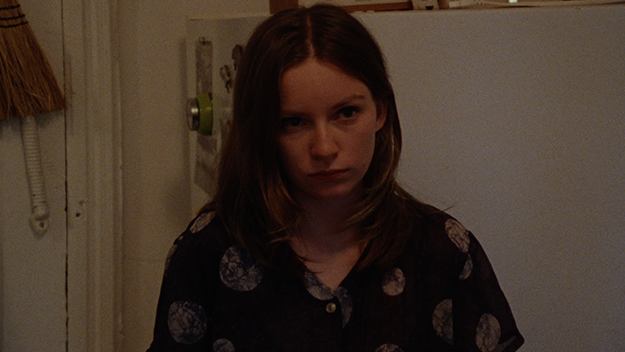
After giving you my takeaway on the morality running through the film, are there any affinities you talk about when discussing about the movie, or is that something you prefer to leave open?
I’ve built a lot of things into the movie that nobody’s catching on to, which is fine; not everything needs to be caught on to. The movie is light and can easily be read as entertainment if you want to read it as entertainment—I did want it to be entertaining. The passing of time is definitely a theme I’ve written into the movie. As well as the tenderness of people, and being tender in a world that’s not necessarily warm to tender people. I just generally like characters who either already connect with people or who really need to connect with people and need love. All the characters have different levels of that, and I built it so that they’re all very different, at different levels, of having connections and being far away from even knowing who they are and want they want or their place in the world.
Bene is definitely the person who knows what he wants and has what he wants, or is getting what he wants. And the threat of not having money to just take this person that he’s falling in love with to dinner, and then the threat of not having the money to have a party with his friends, of not being able to pull that off later in the day, is his driving force. Each character does have a different level of that, which is tricky. The number-one thing I was following while writing was my own experience in discovering that friendship is really, for me, the key to life. It took me a long time to figure that out, and I learned that a lot with Bene, who’s such a good friend. So what I was trying to build into the movie is basically friendship.
It’s almost paradoxical: obviously there are very compelling driving incidents in the film, but there’s also a lot of hanging out, a lot of just shooting the shit. It’s a leisurely movie that goes at a really brisk clip. There’s a lot going on for a film that comes in under 90 minutes.
I felt like I had a breakthrough while writing the short film with the moment when Bene says, “Oh, and then I went and shot some hoops.” There’s this amazing thing, something breaks and suddenly there is leisure, there is this beautiful breath, and it’s pure fun, and the story just kind of stops. I didn’t do that necessarily in the feature because the story is always moving. However, I do get very excited about figuring out how can you just let the story go away for a minute, how can you be leisurely, and still somehow drive the story at the same time? There are times when you think the movie is going off track, but it’s the actual track I wanted it to go on—they’re almost like asides, but they still have to do with everything.
Could you talk a little about how the cast coalesced?
Well Bene was obviously in. I was definitely writing for Tavi [Gevinson], but I don’t know why I believed she was going to be in the movie, it’s not like I knew her or anything, it was just something I wanted. I didn’t know who George [Sample III] was at that point. And I didn’t know that Buddy Duress would end up in his role, but it’s awesome that he did. I wanted the challenge of contrasting, so I thought about having people be very different. I knew Bene was going to be Bene—he could have his own feature–but I didn’t want other people to closely resemble him.
Is the film as we see it fairly close to what was on the page?
It was shot exactly as is appears on the page. In a way it had to be exact. I knew that I was going to edit the movie, and it ended up changing during that process. Everybody who read the script felt that it was very tight, that you could tell I was editing the movie at the same exact time as writing it. And I do still leave myself room in the directing to be flexible in terms of things like rhythm, it’s all rhythmically written and I try to get the actors to sort of fit into this rhythm, so that I could see where the cuts are going to be.
Because it’s not a straight-ahead chronology, I imagine you had a lot of freedom to shuffle things around.
In terms of chronology, things did move around a lot. It is very different from the script, although there’s only so much you can do, obviously, because for a movie to work you can only be with one person for a certain length of time. There was a feedback screening early on where I was told I had made the movie too nicely; everybody had a shared sense of knowing which character was going to come next. And that needed to change, so you never knew who was going to come next.
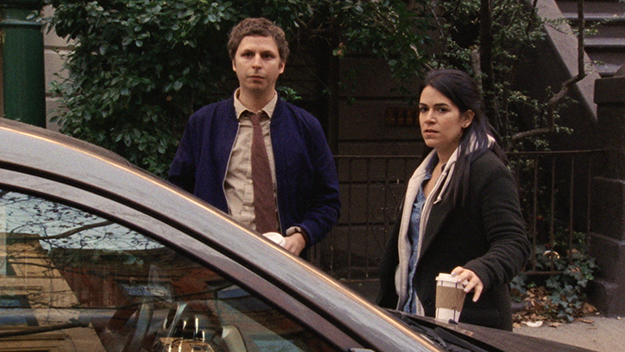
When you talk about thinking in terms of rhythm, do you mean in terms of giving a different motif to each section or in terms of the overarching pattern?
It’s so hard to describe. My thinking is musical for sure, and I want to go further into thinking about characters more musically. Having such a spectrum of characters, and making them different and contrasting, and figuring out how to make the whole thing harmonious. To push that dissonance as far as possible and still keep some kind of harmony. It is in some way a musical and I liked that. I had so many different musical voices and people and figuring out how these rhythms and tones could be pushed a little bit but still stick together became very interesting.
Watching Person to Person with the knowledge that it had been a little while since you made a feature, I felt like it was a movie by someone who was getting as much in as they could—it feels very, very full.
I tried to make it as full as possible, a full 84 minutes, a full day. A lot of stuff happens but—and maybe this has to do with the leisure thing, too—can you make something that feels like a lot of stuff of things happen and then nothing happens? Or something where, when you break things down, a lot has happened, but when you’re watching the movie it doesn’t necessarily feel that way until you’re all done, until we hit the last song. I love that.
There are moments of a kind of heft. Your close-ups have a lot of impact—and I wasn’t really keeping tabs on this, but I feel like you’re very parsimonious with your close-ups.
I am, very much so, though I’m going to get away from that.
They land very hard, the ones that you do use. It’s the Chaplin thing—very shrewd, very sparing with the close-ups, but when they happen…
It’s emotion. Now I’m trying to figure out if I can do that in another way. I now use them purposefully, for that very reason. And I love them. They happen for a reason, and in this case in a non-manipulative way, or as non-manipulative as I can possibly be. And now the challenge is: how can you still get those moments of impact without going to the close-up? That’s what I want to find out.
Nick Pinkerton is a regular contributor to Film Comment and a member of the New York Film Critics Circle.




